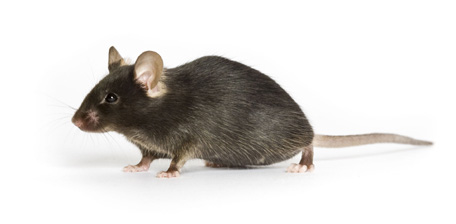Type 2 diabetes is a worldwide epidemic mediated primarily by obesity and a sedentary lifestyle. Its hallmark pathology is the failure of the pancreatic beta cells to produce enough insulin to regulate the body's glucose levels. The disease is usually accompanied by insulin resistance and inflammation involving several inflammatory molecules, including interleukin 1B (IL1B). Although IL1B's role has been unclear, inhibiting it has been shown to improve beta cell function and glucose homeostasis. A California preclinical research and development team found that XOMA 052, a human-engineered anti-IL1B monoclonal antibody, considerably improves glucose homeostasis and ameliorates associated type 2 diabetes phenotypes in C57BL/6J males with diet-induced obesity (DIO) (Owyang et al. 2010).
The pharmacokinetics of XOMA 052

The research team first determined some basic pharmacokinetic properties of XOMA 052. The team found that it has a specific affinity for and neutralizes both human and mouse IL1B (but not IL1A) in vitro. In contrast, another IL1 pathway inhibitor, recombinant IL1Ra, inhibits both IL1B and IL1A. XOMA 052 also neutralizes human and mouse IL1B in vivo — in males of JAX® Mice strain C57BL/6J, the standard DIO model. Though it neutralizes mouse IL1B with 1,000 to 10,000 times less potency than it does human IL1B, it is nevertheless potent enough to be effective in mice. Additionally, XOMA 052 has no effect on food intake or weight gain in C57BL/6J males, whether fed a normal or high-fat diet.
XOMA 052 attenuates diabetic phenotypes in mice
The research team then tested the efficacy of XOMA 052 in two contexts: prophylactic (in mice in which high-fat diet feeding and XOMA 052 treatment are initiated in tandem) and therapeutic (in mice that are already obese). The therapeutic context better represents the overweight patient with progressing diabetes. In both contexts, XOMA 052 improves glucose tolerance, insulin secretion, insulin sensitivity and cell survival, and restores cell mass. Additionally, it reduces triglyceride, free fatty acid, total cholesterol and non-HDL cholesterol levels without affecting HDL levels.
Therapeutic potential of XOMA 052
These research findings are significant for several reasons. First, they demonstrate that inhibiting IL1B effectively treats type 2 diabetes in mice, even after its onset, suggesting that antibody therapy may be used to successfully treat many aspects of the disease in humans. Second, by demonstrating that IL1B is a key mediator of beta cell dysfunction and survival and peripheral insulin sensitivity, the research establishes, for the first time, a clear link between inflammation and insulin resistance in an in vivo model of type 2 diabetes. Third, given the potential cardiovascular risks of current diabetes drugs, the discovery of XOMA 052's lipid-lowering effects suggest that it may reduce the risk of cardiovascular disease. The research team is exploring the potential benefit of using XOMA 052 to inhibit IL1B in animal models of atherosclerosis. Fourth, compared to IL1Ra, XOMA 052 is IL1B-specific and has a longer circulatory half-life. It could therefore be administered much less frequently than IL1Ra.
Diabetes pathophysiology in the male C57BL/6J DIO model is distinct from that in humans. Although early clinical trials with XOMA 052 are encouraging, more trials are needed to determine if using it to regulate IL1B is an effective type 2 diabetes therapy.
References
Owyang AM, Maedler K, Gross L, Yin J, Esposito L, Shu L, Jadhav J, Domsgen E, Bergemann J, Lee S, Kantak S. 2010. XOMA 052, an anti-IL-1{beta} monoclonal antibody, improves glucose control and {beta}-cell function in the diet-induced obesity mouse model. Endocrinology 151:2515-27.